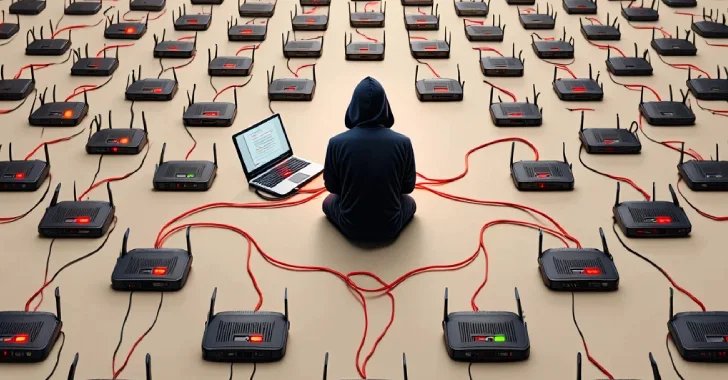Summary Points
-
Critical Vulnerability Identified: CISA has added the high-severity flaw CVE-2023-33538 (CVSS score: 8.8) in TP-Link routers to its KEV catalog, allowing command injection via specific HTTP requests, leading to arbitrary system command execution.
-
Urgent Remediation Needed: Users are advised to stop using affected TP-Link models (TL-WR940N, TL-WR841N, TL-WR740N) if no mitigations are available, especially as many may be end-of-life or end-of-service.
-
Increased Exploit Activity: GreyNoise reports heightened attempts to exploit another vulnerability, CVE-2023-28771 (CVSS 9.8), in Zyxel firewalls, with evidence of various IP addresses engaging in exploitation targeting multiple countries.
- Mitigation Recommendations: Users of Zyxel devices should immediately update their firmware, monitor for unusual behavior, and limit device exposure to safeguard against potential DDoS attacks linked to the identified vulnerabilities.
Underlying Problem
On June 17, 2025, the U.S. Cybersecurity and Infrastructure Security Agency (CISA) unveiled a critical security vulnerability, CVE-2023-33538, affecting specific TP-Link wireless routers, underscoring its high severity with a CVSS score of 8.8. This command injection flaw permits the execution of arbitrary system commands through a crafted HTTP GET request, potentially jeopardizing the devices’ security. CISA flagged this issue after discovering evidence of active exploitation, steering users towards deactivation of affected models—specifically the TL-WR940N, TL-WR841N, and TL-WR740N—especially if they have reached their end-of-life or end-of-service status. Investigations by Palo Alto Networks’ Unit 42 connected this vulnerability to the FrostyGoop malware, although no conclusive evidence linked it to recent attacks.
Concurrently, security firm GreyNoise reported exploit attempts targeting another critical vulnerability, CVE-2023-28771, found in Zyxel firewalls, with a staggering CVSS score of 9.8. This particular flaw allows unauthenticated attackers to execute commands via malicious requests and was initially patched in April 2023. Heightened activity aimed at exploiting this vulnerability was observed shortly before June 16, 2025, with 244 distinct IP addresses implicated. These developments signal an urgent need for users to update their devices and enhance monitoring to avert potential threats, as indicated by both CISA and GreyNoise assessments.
Risk Summary
The recent identification of a significant vulnerability (CVE-2023-33538) in specific TP-Link routers poses material risks not only to the immediate users of these devices but also to a broader ecosystem of businesses and organizations leveraging interconnected technologies. Exploitation of this command injection flaw could permit malicious actors to execute arbitrary commands, potentially compromising sensitive data and networks, thereby creating a cascading effect of insecurity across systems that utilize these routers for operational purposes. Furthermore, the likelihood of affected devices being end-of-life raises alarms for long-term security, as organizations relying on obsolete technology may inadvertently serve as gateways for further cyber incursions. In a climate where cyber threats are increasingly sophisticated and interconnected, the potential fallout includes disrupted operations, financial losses, and reputational damage, underscoring the urgent necessity for proactive security measures, including timely firmware updates and vigilant monitoring for anomalous behavior.
Possible Actions
The rapid advancement of cyber threats necessitates an unwavering commitment to timely remediation, particularly in response to vulnerabilities such as the ‘TP-Link Router Flaw CVE-2023-33538,’ which currently faces active exploitation. Vigilant attention to these alerts can protect sensitive information and infrastructure from being compromised.
Mitigation Steps
- Firmware Update: Immediately update the router firmware to the latest version.
- Disable Remote Management: Turn off remote management features if not in use.
- Change Default Credentials: Alter the default username and password to complex and unique combinations.
- Network Segmentation: Isolate the affected devices from the main network to limit potential damage.
- Regular Monitoring: Implement continuous monitoring of network traffic for unusual activities.
NIST Guidance
According to the NIST Cybersecurity Framework (CSF), proactive measures and risk management are essential. Specifically, organizations should refer to NIST Special Publication (SP) 800-53, which outlines security controls pertinent to risk assessment and mitigation in response to known vulnerabilities.
Explore More Security Insights
Discover cutting-edge developments in Emerging Tech and industry Insights.
Access world-class cyber research and guidance from IEEE.
Disclaimer: The information provided may not always be accurate or up to date. Please do your own research, as the cybersecurity landscape evolves rapidly. Intended for secondary references purposes only.
Cyberattacks-V1

